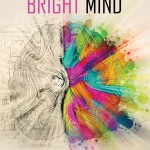Many teachers carry strong ambivalence about multiple-choice questions (handy abbreviation: MCQs).
On the one hand, MCQs offer the benefits of simplicity — not a small feature in our complex lives.
On the other hand, they seem altogether too cheap and surface-y to promote our goal: long-term, flexible, and useful knowledge.
If only well-designed MCQs could offer us the good stuff (“simplicty”) without the bad stuff (“merely surface learning”)…
But wait just a moment…
The Story Before the Story
As I’ve written in the past, we do have some easy strategies to improve the quality of MCQs.
One easy approach: make the alternative answers plausible.
That is: When I ask my students “Who is Laertes?”, the potential MCQ answers could be:
a) Ophelia’s brother, a foil for Hamlet
b) Bugs Bunny’s alter ego
c) My cat
d) The star of an upcoming Marvel movie
Or the answers could be
a) Ophelia’s brother, a foil for Hamlet
b) Macbeth’s partner, whom he later murders
c) Othello’s advisor, who betrays him
d) Prince Hal’s companion, famous for appetite
Obviously, the first list doesn’t require the students to think hard. (My cat’s name is “Pippin,” thank you very much.) So, they won’t learn much from that MCQ.
 However, the second list provides several plausible answers. To get this question right, students have to think about various Shakespearean plays.
However, the second list provides several plausible answers. To get this question right, students have to think about various Shakespearean plays.
Because “memory is the residue of thought,” and this MCQ requires more thought, it will almost certainly result in more memory (a.k.a. “learning”).
With this example to guide us, are there other ways we might improve MCQs?
Take a Moment
A recent study explores another handy way to encourage our students to think more.
Step 1: show the MCQ — but not the potential answers;
Step 2: pause just a bit;
Step 3: okay, NOW show the answers.
In theory, students just might use that strategic pause to see if they can think of the answer on their own.
That is:
If I ask, “Who is Laertes?”
My students might think “Gosh, that’s from some Shakespeare something. Could be Othello…or, wait, I’m thinking Hamlet. That’s right…he fought against Hamlet in that swordfight. Something about a ‘palpable hit.’ “
When — after the pause — the students see the answers I’m offering, they can confirm the answer they started with. (Or, check themselves against the other possibilities.)
In other words, this strategy offers yet another way to prompt students to think.
Clearly this idea makes sense in theory; does it work in practice?
From Esperanto to Swahili
The research team tested this question with word pairs: either Dutch-Esperanto, or Dutch-Swahili.
In addition to all the research techniques we like to see, this team added two not-altogether-common steps.
First: they ran four different experiments — not just one. In this way, they were able to explore nuances and details to build up a more-complete-than-usual picture.
Second: they tested the students’ memory of those word pairs several days later.
Researchers often assess “learning” by retesting after several minutes, or an hour. Because this team waited a few days, they’re giving us a more plausible reason to believe that students did (or did not) “learn.”
So, what did the researchers and their extra-admirable methods find?
Conclusion #1: the wait just a bit strategy worked.
That is: students remembered more word pairs when they had to wait to see the possible answers than when they didn’t.
Conclusion #2: the benefit came from effortful thinking.
Students who used the pause to try to recall the word pair remembered more pairs than those who just waited for the potential answers to show up.
Conclusion #3: the “make the alternative answers plausible” strategy still works.
This team re-tested the strategy explained above. Sure enough, making the distractors plausible prompts students think harder. And, therefore, they remember more.
It’s almost hard to believe that such a simple strategy could help … but these four studies offer good support for that conclusion.
TL;DR
If you want to have your students learn more from multiple-choice questions, build in a short pause between the question and the possible answers.
And, encourage your students to think during that pause: what will the right answer be?
The more thinking, the more learning.
van den Broek, G. S., Gerritsen, S. L., Oomen, I. T., Velthoven, E., van Boxtel, F. H., Kester, L., & van Gog, T. (2023). Optimizing multiple-choice questions for retrieval practice: Delayed display of answer alternatives enhances vocabulary learning. Journal of Educational Psychology.



